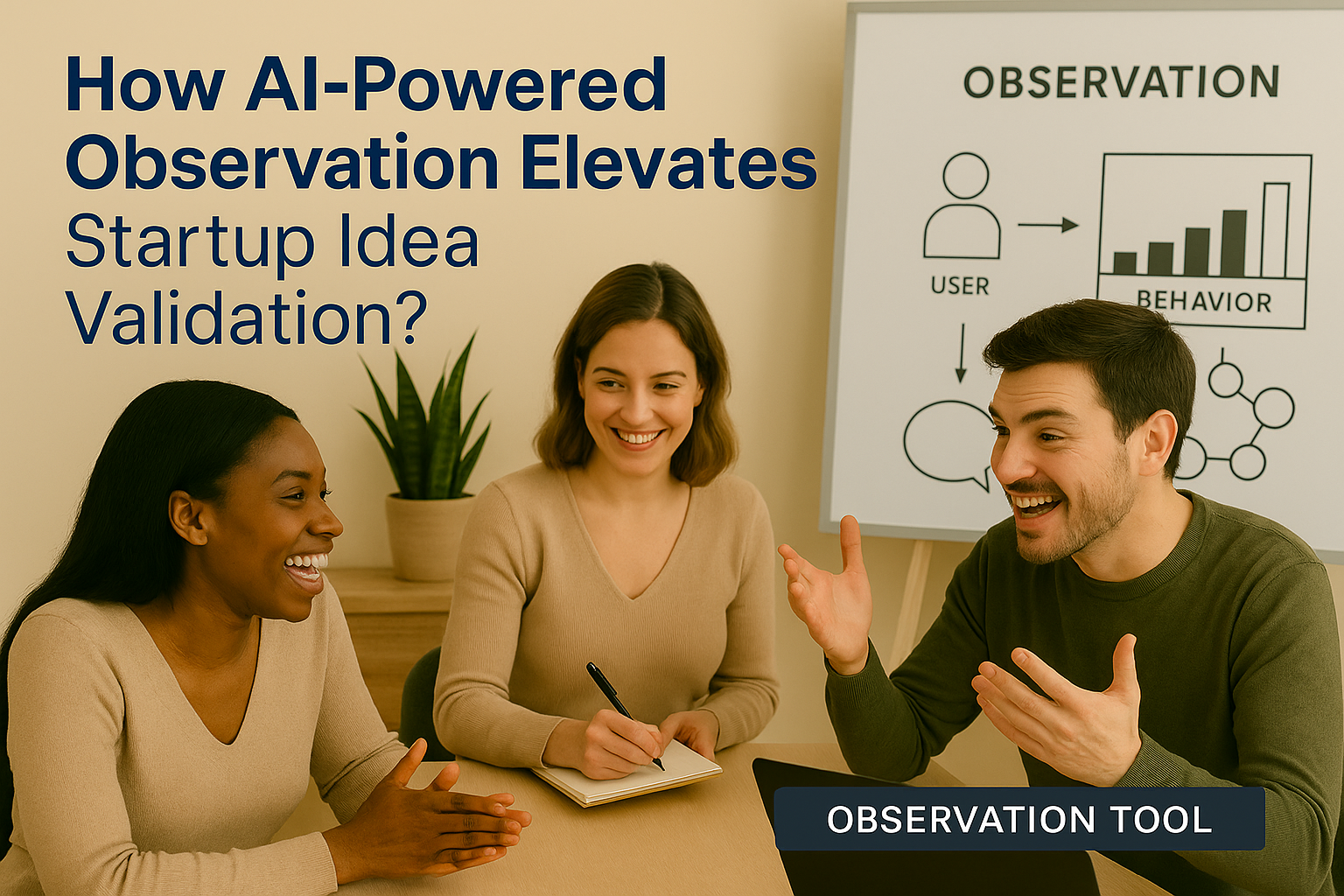How AI-Powered Observation Elevates Startup Idea Validation?
Observation is a powerful yet often overlooked tool for startups. Instead of relying only on what users say, observing their real actions reveals unmet needs, hidden frustrations, and behavioral patterns you can’t get from surveys alone. By embedding observation early in your validation process, you sharpen empathy, reduce assumptions, and uncover subtle signals that inform better product-market fit strategies.
What Is Observation?
Observation is the systematic watching of users as they interact with products, services, or environments—capturing what they do, not just what they claim or think. It’s about paying attention to behaviors, habits, workarounds, emotional reactions, and context. Rather than relying solely on spoken feedback, it surfaces the implicit behaviors and decisions that often shape real user experience. As one practical guide puts it, “Observation is the silent, yet powerful, skill that allows founders to discern unmet needs, emerging trends, and subtle shifts in consumer behavior.”
How Does Observation Support Validation?
Observation strengthens validation by:
- Uncovering real behaviors: You may hear users say they do one thing, but real-life actions often differ, highlighting gaps between expectation and reality.
- Discovering latent pain points: Observing users struggle with a task or workaround reveals genuine problems they might not verbalize.
- Validating prototypes in context: Instead of lab-based feedback, real-world observation shows how an MVP fits into daily routines, revealing integration or usability issues.
- Reducing confirmation bias: Observed data challenges assumptions and helps prevent founders from misinterpreting what users say as what they do.
How Does AI Support Conducting Observation?
AI can enhance observation by making it scalable, analytic, and actionable:
- Behavior recognition from video or sensor data: AI tools can process recordings to identify repeated behaviors, frustration cues, or workflow bottlenecks without manual tagging.
- Pattern and exception detection: Machine learning analyzes usage logs and sequences to highlight outlier behaviors or non-obvious patterns.
- Contextual insight mining: NLP and audio analysis can link user comments, tone, or inflection to observed behavior, enriching qualitative insights.
- Automated synthesis and visualization: AI platforms can generate behavior heatmaps, trend reports, and user journey flows—connecting what people do with what they say or feel.
By combining direct observation with AI tools, founders capture both micro‑behaviors and macro‑patterns, boosting validation accuracy and empathy depth.
Observation is no longer limited to manual notetaking or lab sessions. With AI, you can scale insights, detect hidden user behaviors, and bring depth to your validation storytelling. Observing what customers do—and enriching it with AI analysis—unlocks nuanced understanding and innovation grounded in real-world use. If you’re ready to move beyond what users say to what they truly do, it’s time to make observational validation part of your startup strategy.






